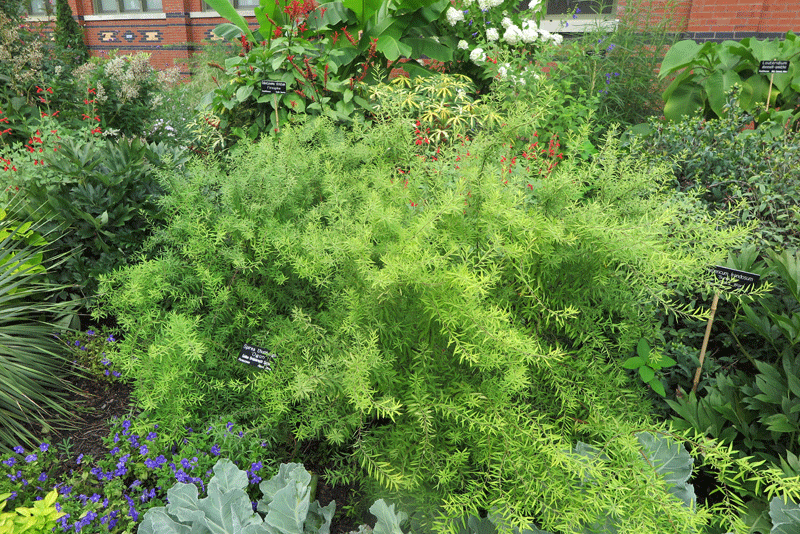Spirea
Spirea, Spiraea
Spireas are old-fashioned shrubs that became cutting-edge choices when dwarf, colorful types were introduced. Now that groundcover varieties are available, spireas are approching cutting-edge status again.

Growing
Spireas prefer full sun but do benefit from late afternoon shade. To help prevent foliage burn, provide protection from very hot sun. The soil should be fertile, acidic, moist and well drained.
Tips
Spireas are popular because they adapt to a variety of situations and require only minimal care once established. They are used in shrub or mixed borders, in rock gardens and as informal screens and hedges.
Recommended
Many species and cultivars are available, including the following very popular selections. S. japonica (Japanese spirea) forms a clump of erect stems and bears pink or white flowers. S. nipponica is an upright, spreading shrub with arching branches, dark green foliage and cup-shaped, white flowers in mid-summer. ‘Snowmound’ is a vigorous, spreading cultivar with a prolific flowering habit. S. prunifolia (bridalwreath spirea) is a large, arching shrub with finely toothed leaves and copious amounts of double white flowers in late spring. S. x vanhouttei (Vanhoutte spirea) is a dense, bushy shrub with arching branches that bears clusters of white flowers. Many new cultivars available, including those with varying foliage colors and sizes.
Features: round, bushy, deciduous shrub; summer flowers; habit
Height: 2–8'
Spread: 2–8'
Hardiness: zones 3–9
Sidebar: Spireas are a favorite for attracting butterflies to the garden.
Spirea, Spiraea
Spireas are old-fashioned shrubs that became cutting-edge choices when dwarf, colorful types were introduced. Now that groundcover varieties are available, spireas are approching cutting-edge status again.

Growing
Spireas prefer full sun but do benefit from late afternoon shade. To help prevent foliage burn, provide protection from very hot sun. The soil should be fertile, acidic, moist and well drained.
Tips
Spireas are popular because they adapt to a variety of situations and require only minimal care once established. They are used in shrub or mixed borders, in rock gardens and as informal screens and hedges.
Recommended
Many species and cultivars are available, including the following very popular selections. S. japonica (Japanese spirea) forms a clump of erect stems and bears pink or white flowers. S. nipponica is an upright, spreading shrub with arching branches, dark green foliage and cup-shaped, white flowers in mid-summer. ‘Snowmound’ is a vigorous, spreading cultivar with a prolific flowering habit. S. prunifolia (bridalwreath spirea) is a large, arching shrub with finely toothed leaves and copious amounts of double white flowers in late spring. S. x vanhouttei (Vanhoutte spirea) is a dense, bushy shrub with arching branches that bears clusters of white flowers. Many new cultivars available, including those with varying foliage colors and sizes.
Features: round, bushy, deciduous shrub; summer flowers; habit
Height: 2–8'
Spread: 2–8'
Hardiness: zones 3–9
Sidebar: Spireas are a favorite for attracting butterflies to the garden.


